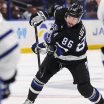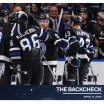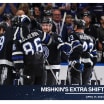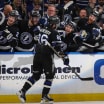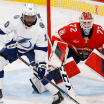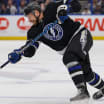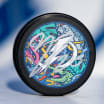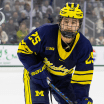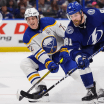Welcome to another season of Mishkin's Musings, a periodic column in which I, well, "muse" on various hockey topics. Some are more Lightning-centric. Others less so. Also, after each Lightning game, I again will be producing "Extra Shift", a breakdown of how I saw the game from the radio booth. Extra Shift will begin when the regular season does.
Today's column will detail the new rules implemented this year in the NHL. Earlier this month, I attended the annual NHL Broadcasters Meetings. One of the most informative segments in the Meetings is when we learn about rule changes. As compared to other seasons, there aren't as many new rules this year. But that doesn't mean that they aren't significant.
Mishkin's Musings: A primer on the new rules for the 2017-18 season
Dave Mishkin also looks at which rules will be more strictly enforced this season
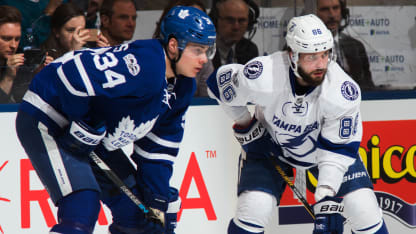
© Kevin Sousa
The Offside Challenge:
What Changed?Over the past couple of seasons, an unsuccessful offside challenge cost the challenging team a timeout. Additionally, if a team no longer had its timeout, it couldn't even challenge a call. These parameters were identical to the goalie interference challenge, which remains unchanged.
Now, an offside challenge isn't tied to a team's timeout. An unsuccessful challenge doesn't result in a timeout lost nor does the challenging team still need to have its timeout in order to challenge a call.
Instead, an unsuccessful offside challenge results in a two-minute minor penalty for the challenging team. (Also, the original goal still stands, obviously).
Why Did It Change?General Managers voted 30-1 in favor of this rule change. Their objective was to reduce the overall number of offside challenges. The threat of a penalty is viewed as more severe than the loss of a timeout, meaning that a coach will be more hesitant to challenge a "50-50" call. Fewer offside challenges will help the flow of the game, which was often disrupted by lengthy reviews.
What Will Happen? We should see a reduction in the number of offside challenges, as teams will be less willing to roll the dice if replays aren't definitively in their favor. This seems to be in line with the spirit of the original rule change. The offside challenge was put in place to guard against egregious offside calls missed, such as Matt Duchene's goal against Nashville a few years ago. It's turned into something much more nuanced - goals have been taken off the board because a player is offside by inches. There should be fewer of those goals overturned.
Watch: Youtube Video
I do expect teams to try a "Hail Mary" challenge if the goal in question costs them a game (one scored in OT or late in the third). Also, if an offside is both missed and unchallenged, fan bases watching replays over and over may very well complain about this rule change. But still, I think the likely reduction in the quantity of challenges will be welcomed by one and all.
No Timeout After Icing:
What Changed?In 2005, the league intorduced the rule that a team may not change its players after icing the puck. This was done to both "punish" a team for committing an icing and to create more scoring, since the offending team would have tired players stuck on the ice. In some instances, particularly if his players were especially winded, a coach might call timeout prior to the ensuing faceoff. Now, a team may not call timeout after an icing.
Why Did It Change? For the same reason as the original rule change. It's part of the effort to create more scoring. Fresh players enjoying an offensive zone faceoff against tired opponents have an advantage.
What Will Happen?I'm pretty certain we will have more goals scored after icing infractions, but I'm not sure how many. Teams only get one timeout per game. So it's not as if we had that many timeouts after icings in past seasons. But even if the new rule results in a very slight uptick in offense, the change reinforces the spirit of the original rule - to make icing potentially a more costly infraction than it had been previously.
I also expect that we'll continue to see plenty of equipment "issues" from the team that iced the puck. Suddenly, players will need new sticks or the goalie has a problem with his mask. Anything to give the tired unit more time to rest.
High Sticking Infraction On The Power Play:
What Changed?A high stick infraction occurs when a player touches the puck with his stick above his shoulders. (This is different from the high sticking penalty, when the stick makes contact on an opponent). During five-on-five play, the ensuing faceoff occurs in the zone where the infraction occurred, unless it happens in the offensive zone. Then the faceoff takes place in the neutral zone, just outside the offending team's offensive blue line. But on a power play, the standard was different. A high stick infraction automatically resulted in a defensive zone faceoff, no matter where it occurred. Now, the standard is the same as in five-on-five play. In other words, if a team on the power play commits a high stick infraction in the offensive zone, the ensuing faceoff will be in the neutral zone just outside the offensive blue line. Not in the defensive zone.
Why Did It Change? I guess the severe result (d-zone faceoff) was to discourage players already on a manpower advantage from swinging their sticks up high to knock down pucks. But I'm not sure it was ever a deterrent. Anyway, it seems logical to keep the rule consistent, no matter the situation.
What Will Happen?It'll be easier for a power play unit to re-enter the offensive zone after a high stick infraction.
In addition to the three aforementioned rule changes, the NHL is applying a stricter standard to slashing and faceoff violations. To be clear, these aren't rule changes. The rules have already been in place. Officials are just following them more rigidly. Throughout the preseason, we've seen the application of the new standards - and players are trying to adjust.
Slashing:
Why Did The Standard Change?This was borne from several incidents last year in which players sustained injuries because of slashes. Specifically, Marc Methot (then of Ottawa) and Johnny Gaudreau.
When the league instituted its crackdown on obstruction in 2005, players needed to adjust how they defended the opposition. They could no longer use their stick to "tug". So little stick taps crept into the game. Now, officials are trying to get the taps out of the game, so even the most mild tap is being called as a penalty.
Incidentally, both the league and the players were on board with this new standard.
What Will Happen?Obviously, everybody wants to see injuries resulting from slashes greatly reduced, if not eliminated. As was the case with obstruction, there will be an adjustment period in which games will have a high number of slashing penalties. But eventually, the players will amend the way they use their stick to defend and the penalty numbers will revert to what they have been.
It'll be interesting to watch how players relearn how to defend. Without the ability to tap or tug, players will need to rely even more on good body positioning. Poke checking will be an important tool as well. But we may see more openings for attacking players as a result.
Faceoff Violation:
Why Did The Standard Change?The league hopes to remove "cheating" from faceoffs. Cheating on faceoffs has always been about gamesmanship, akin to stealing signs in baseball. Players that move their feet over the hashmarks before the puck is dropped put themselves in an advantageous position to win that faceoff.
Now, players must keep their skates behind the red hashmarks and stay square to their opponent. If not, they will be thrown out of the faceoff.
What Will Happen?As with slashing, players will adjust and there will be fewer instances in which players are tossed from the circle. But until that point comes, be prepared for some delays before the puck is dropped. And penalties too. If two players from the same team are thrown out of the same faceoff, a delay of game penalty is assessed.
I saw a quote from Sidney Crosby, who has become one of the better faceoff men in the league. When asked about the stricter standard, he replied that he liked it. Because he doesn't use his feet to try to win faceoffs. I confess that I don't know which players typically rely on their feet, but I'm curious to see if some of the top faceoff guys in the league will be less effective than usual. Or if some players become appreciably more proficient because they are good with their hands, not their feet.
So there's your primer on rules for the upcoming season. I'll have another column next week before the Lightning's season opener on October 6.

